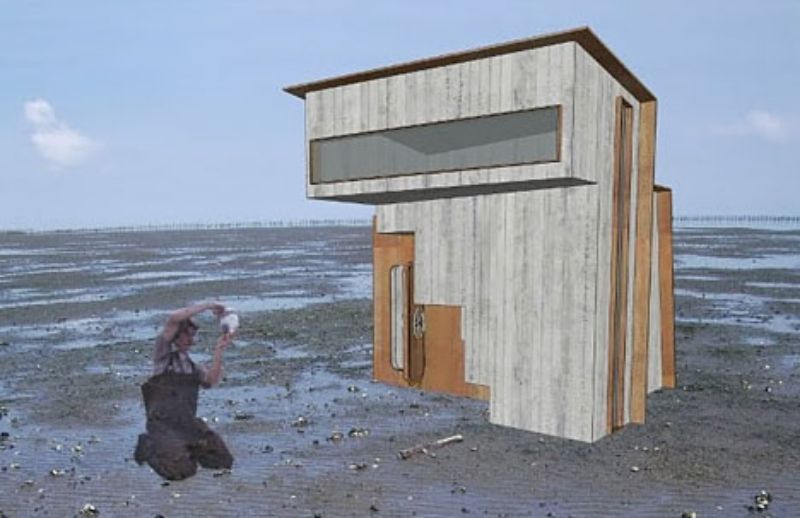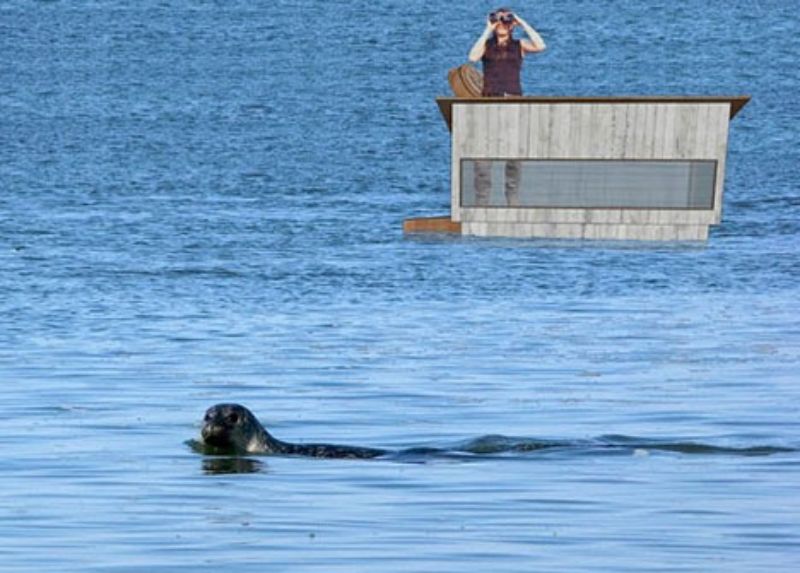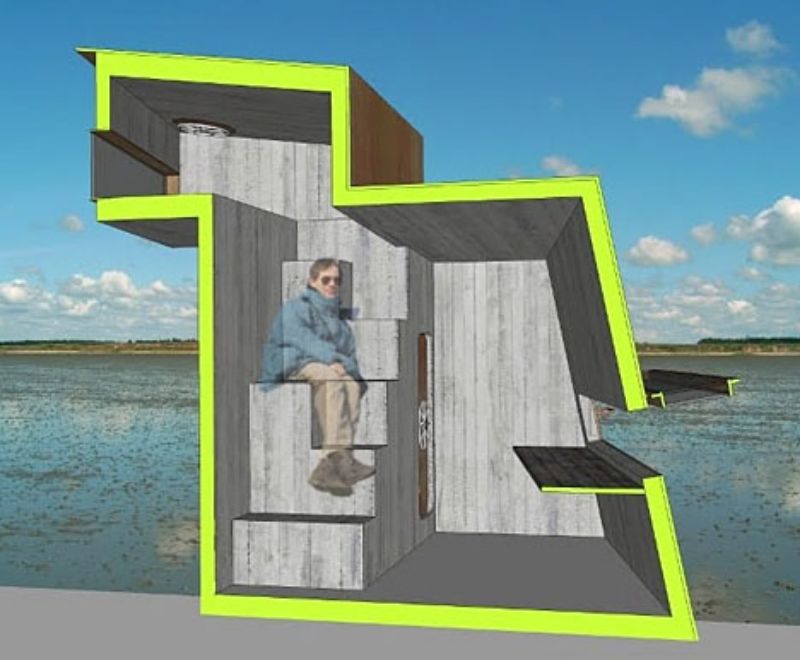Sea Shelter Gets Even More Isolated at High Tide

We tend to think in dualistic terms when it comes to land and water – a residence, for instance, is either on land or in the water. You have luxury villas or cruising yachts (or perhaps forest shacks and rusty barges) but rarely combine the two. This sea shelter is designed to mediate between the worlds of wet and dry, exposing its occupants to an interesting interstitial world that exists between extremes – one that appears and disappears with the rising and lowering of the tides.
Specifically intended for use along the coast of Denmark, this SeaShelter idea created for the Design It: Shelter Competition by David Eltang caters to a curious landscape that is neither truly accessible by boat (being too shallow) nor to hikers who wish to experience unique tidal wildlife (as it is too deep). It won first prize with accolades for its creativity.

Entered from a hatch on the roof, the building has side portholes for viewing the semi-aquatic sea life that swims, wades or walks by during high-tide times, then recedes with the water during low tides, all without the person watching getting wet. There is enough space to lay down a sleeping back, sit and/or do some light work, though not so much as to make it a fully livable home (unfortunately).

The building itself has visual elements that remind one of both a cozy rural cabin as well as a submarine-style periscope being raised up above the waterline. Vertical view windows offer exterior snapshots while horizontal ones provide panoramic viewing opportunities. This would, of course, make a great (and literal) lake home aside from its intended use as a ‘green vacation’ prefab for eco-tourism on the Danish coast.
About the Design It: Shelter Competition
“The competition is an extension of Learning By Doing, an exhibition in the Guggenheim Museum Sackler Center for Arts Education that features plans, photographs, and models of student-built shelters from the Frank Lloyd Wright School of Architecture. For the past seven decades, students at this school have taken on the challenge of designing, building, and living in small shelters nestled in the landscapes of the school’s Arizona and Wisconsin campuses. In working on these shelters, students consider human needs for safety and comfort, as well as the relationship between architecture and place.”

“The Guggenheim Museum invites you to create your own virtual shelters, located anywhere on Earth. Share your design on the Guggenheim’s Web site by first modeling your shelter with Google SketchUp, then placing your model on Google Earth. When designing your shelter, consider Frank Lloyd Wright’s interest in the connection between architecture and its location. How can your shelter respond to the specific natural and built environments that surround it?”




